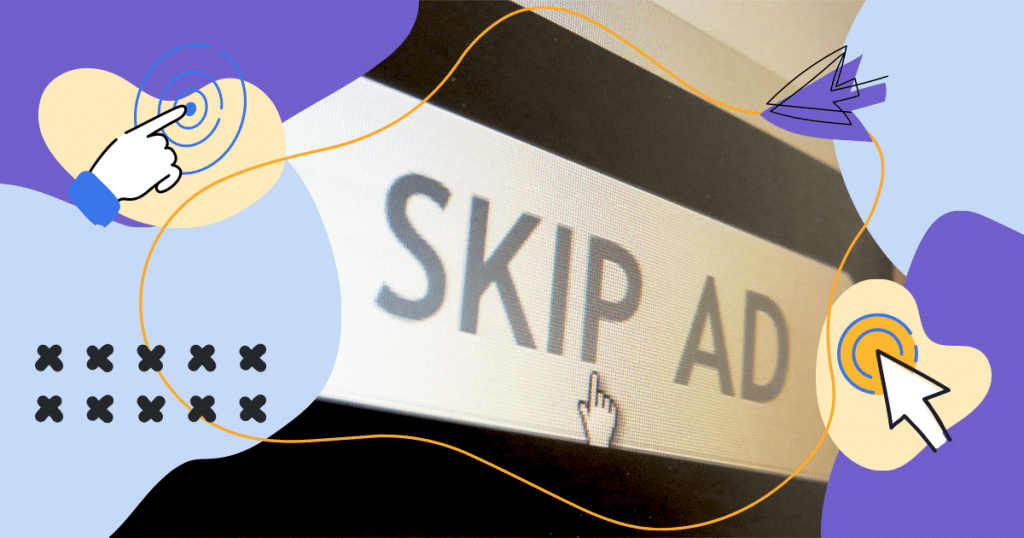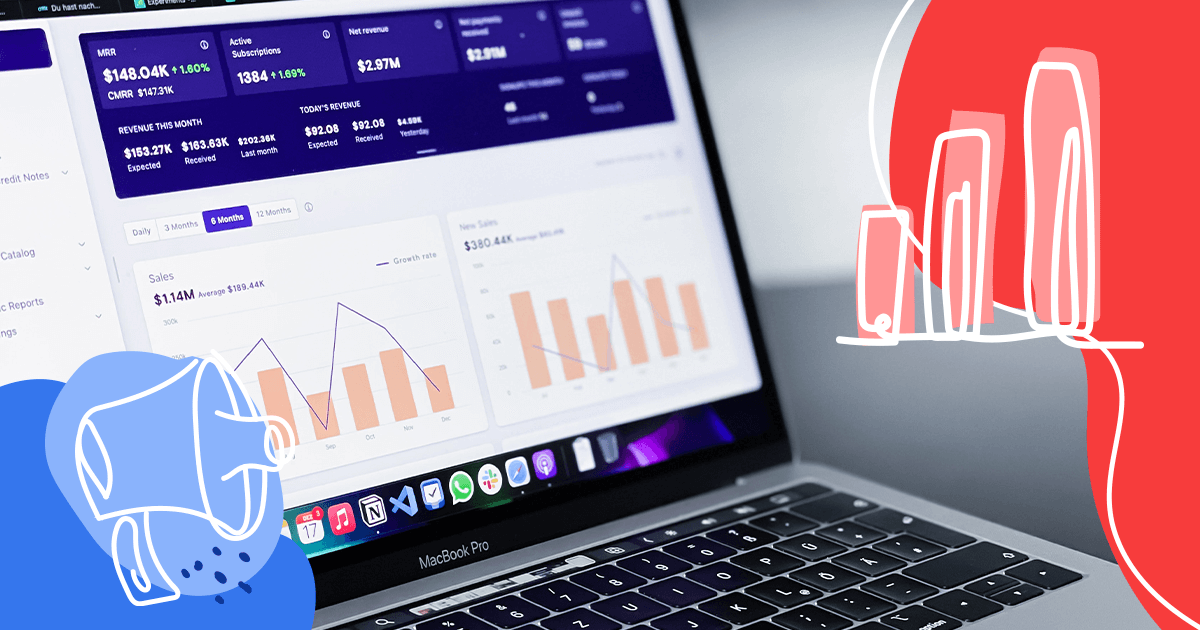A well-rounded content marketing plan needs to include some form of ad strategy, whether that be in the form of Google ads, social ads, or paid ads hosted on other websites.
However, as the ad space continues to become crowded, not every ad is given the same amount of attention.
In fact, some ads seem like they get ignored altogether.
A phenomenon called “banner blindness” is growing among digital media users, and it can have major negative impacts on the effectiveness of your ad strategy.
In this article, we’ll take a look at the banner blindness theory as well as explaining tactics to use in your ad strategy that can help you overcome the effects of banner blindness and significantly improve your campaigns.
What are Banner Ads?
Before we can start to understand what banner blindness means, we first need to comprehend what a banner ad is.
The first distinction to make is that a banner ad is not a pop-up. Pop-ups are ads that have a clickable “x” to remove the ad from your screen and are usually blocked by an ad-blocking plug-in on your browser.
Banner ads are ads that are embedded by an ad server into a website and are displayed at the top, center, or bottom of a web page.
Banner ads are sometimes referred to as “digital billboards” as they are typically static ads meant to attract enough attention in a reader for them to click off the website to the site of the advertiser.
While any website can have a banner ad embedded on its pages, they are most commonly found on news sites or aggregation sites.
These ads are different from sidebar ads, as a banner is meant to attract attention before the reader scrolls down the page.
This type of banner can also be included on a page by the brand itself to promote some product, event or rich material.
For example, if one of our blog posts talked about best practices to increase conversions, we could include on it a banner to this ebook:
So What is Banner Blindness?
Think about the last time you really paid attention to the sound of your refrigerator running or your heating system kicking in.
While these sounds were at first prominent when you moved into your home, after time you’ve likely grown accustomed to hearing them and now tend to tune them out during everyday life.
Banner blindness functions in a very similar way.
While banner blindness can refer to a deliberate refusal to acknowledge an ad, it is usually used to describe an unconscious form of selective attention.
Let’s look back to the last time you visited your favorite news site.
- Was there a banner ad at the top of the page?
- Did you notice it?
- Or did you already start to scroll down to the content before noticing what it was — or maybe before it even loaded all the way?
If a reader expects there to be an ad on a website, odds are, after time, they grow accustomed to scrolling partway down the page to get to the content they want to see without ever looking at the banner ad.
After a time, the banner ad on the site serves no purpose as viewers aren’t even looking directly at it, much less clicking on it.
What Can You Do to Avoid Banner Blindness?
Banner blindness can affect any advertiser, and the impact of it can result in a loss of ROI, loss of revenue, and a decrease in conversions.
In the worst cases, your brand can take a hit on reputation or reliability if the ad is seen as a nuisance or distraction from the content a viewer wants to see.
In order to combat banner blindness, digital marketers need to be smarter about the look and design of their ads.
Here are 6 tactics you can try to avoid banner blindness in your ad campaigns:
1. Avoid Looking Like an Ad
If we’re being honest, banner blindness is closely tied to ad burnout.
When a website visitor is bombarded with advertisements every time they open a page, they aren’t going to want to engage in the ads, click on the offers, or even visit the website if the ads are too plentiful.
In order to stand out from the sea of banners and sidebar ads on web pages, your ads need to have a different look and not appear as an advertisement at first glance.
This can garner interest in your brand’s message without coming across as overbearing.
Here are a few tips to help you avoid looking like an ad:
Try Different Color Schemes
While a bright and colorful ad might help you stand out in some areas, readers expect the banner areas of web pages to be busy. Try a cooler palette, dark background, or plain images to draw attention.
Test Non-Traditional Sizes
If your ads always have the same dimensions, try changing up the shape of your advertisement. This can draw a reader’s attention as it’s something different from the monotony they’ve become accustomed to.
Invest in Design
If your ads aren’t getting clicks and views, try investing in a new design. Find simple but effective elements, contrast the native content on the page, and make your CTA prominently stand out.
2. Try Video Advertisements
Video and moving visual content can catch a reader’s eye and draw their attention to your advertisement more than a static image or design can.
A video ad can also communicate more information to viewers than an image can.
Be cautious with this approach, however, as a boring video ad can come across as a nuisance or a pop-up ad to readers.
Make sure your video is engaging, informational, and entertaining. A poor-quality ad can damage your brand’s reputation.
3. Make Sure You’re Targeting the Right Audience
It may seem basic, but making sure your ads are on the right websites is key to their success.
If your company wants to connect with young Gen Z audiences but your banners appear in the New York Times, you may be missing the mark.
Targeting the right audience with an interesting and out-of-the-box advertisement can help readers look at your ads rather than ignoring them.
4. Use Native Advertising
A native ad is an advertisement that blends into the format it’s advertising in.
Rather than a banner ad at the top of the page, try having your advertisements appear partway down the page and match the style of content on the web page.
Not only are native ads seen by more readers, but they also are designed to not appear as an advertisement and thus avoid the negative connotations readers can have when seeing an advertisement in their content feed.
5. Include Interactive Elements
Audiences of all ages prefer ads that draw them in and encourage them to interact with the content. Interactive banners can have elements like:
- Playable Features
- 3D Exploration
- AR Elements
- Gaming Elements
- Quizzes or Polls
6. Test for Success
If you aren’t sure which approach to take when improving your banner ads, make sure you test different methods and find one that works for your advertising goals.
You can start with the tactics that cost the least amount of money or require the shortest amount of time to implement, then move on to more time or cost-inclusive options.
Is It Safer to Stop Investing in Banner Ad Campaigns?
While there are options and tactics to try implementing with your banner ads, there may come a time when you have to consider if a banner ad strategy is the most cost-effective for your ad performance.
Banner ads can be expensive, especially if you’re fighting for space at the top pages of industry giants.
That high initial cost combined with banner blindness and low engagement can have monumental negative impacts on your bottom line.
There are a wide variety of ad formats besides banner ads that can cost less and attract more attention.
Sidebar ads or mid-page ads can stay in the reader’s views for longer periods of time and have a better chance of being seen, as readers won’t automatically scroll partway down a webpage to avoid the ad content at the top.
You can also change up your ad strategy to include native advertising and interactive approaches in your social ads, which can be much more cost-effective and targeted towards specific audiences rather than general viewership on web pages.
Try our 6 tactics for improving your banner ads before stopping your banner ad strategy altogether, but make sure to keep your options open for the most cost-effective ad formats and placements.
Wrap Up: Banner Blindness may be a Roadblock to your Goals
However, there are solutions in place that you can try before completely abandoning your banner ad strategy.
A comprehensive digital ad strategy has different touchpoints and clear goals for your company.
But some marketers still miss the mark when it comes to understanding and analyzing ad performance.
If you want to learn techniques to increase your ad performance, check out our free resource today.
2024 State of Marketing Report
Your golden ticket to crush your goals with data-driven insights!
2024 State of Marketing Report
Your golden ticket to crush your goals with data-driven insights!


![[Rock NA] State of Marketing Reports 2024 – Comkt Hubspot State of Marketing Report 2024](https://rockcontent.com/wp-content/uploads/2022/07/Banner-Fino-Rock-Convert-2500-%C3%97-500-px-19.png)







